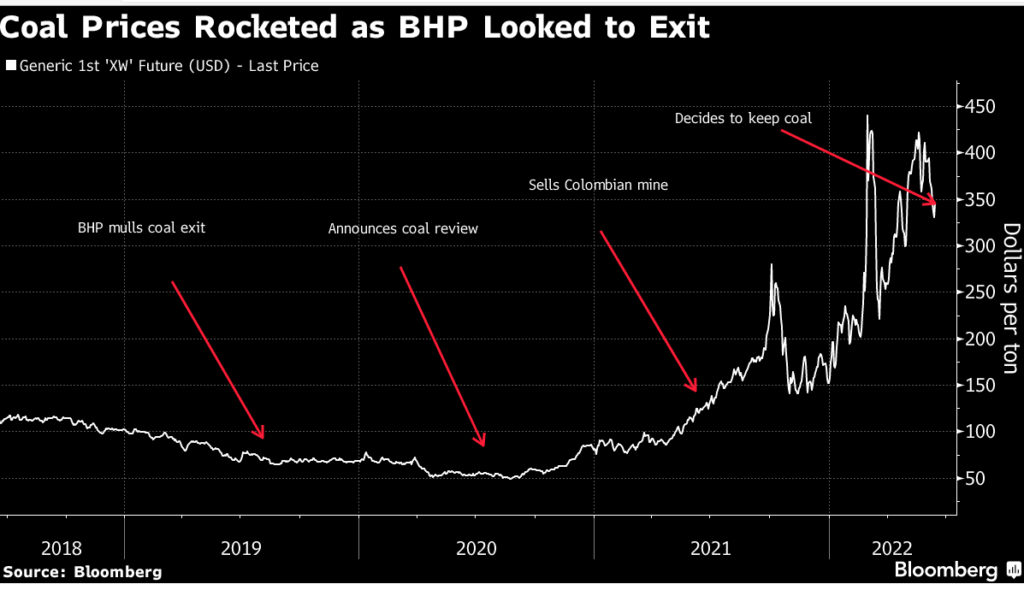Energy
Monday, July 11th, 2022 9:47 am EDT
Rivian recently treated automotive journalists to a ride and drive event featuring the R1S electric SUV on a drive through the Catskills and during some serious offroading in Montecello, New York, halfway between New York City and Binghamton. Abigail Bassett was there for Autoblog, as was Tom Moloughney for Inside EVs. (Our invitation must have gotten lost in the mail.) Rather than keep you in suspense and make you read a lot of statistics about psi and picocuries per cubic centimeter, we are going to take you straight to the part where these two intrepid journalists summarize their impressions of the Rivian R1S.
Abigail Bassett: “While the cost for a 2022 Rivian R1S is high, the range, capability, comfort and space are worth it, especially if you’re looking for a vehicle from a company that appears to be really trying to both offer unique, thoughtful, functional features in the all-electric space, and inspire people to have more adventures both on and off the beaten path.
Tom Moloughney: “The best way to describe the R1S’s overall performance to someone that hasn’t experienced one yet would be to combine the finest characteristics of a Range Rover, a Mercedes G-Class, and a Lamborghini Urus. And the resulting super SUV might still be inferior to the Rivian R1S.
“The R1S drives more like a sports sedan than a hulking, 7,000-pound SUV. The All Purpose driving mode is perfect for most daily driving situations. Even with a starting price of $84,500 for the quad motor, large pack version, the R1S is actually very reasonably priced for the content and the segment. The R1S isn’t just an electric SUV, it’s simply a better all-around vehicle than the existing crop of conventionally fueled SUVs, even those that cost more than twice as much.”
The Rivian R1S Specifics
So what makes the Rivian R1S so good? First of all, the only model being produced right now, and the one used in this ride and drive event, comes with 4 electric motors — one for each wheel — 835 horsepower, and 908 pound-feet of torque that can sling this 7,000 pound vehicle to 60 mph in just a tick over 3 seconds. As with the R1T, Rivian plans to introduce a less expensive dual motor all-wheel drive configuration in 2024 with more than 600 horsepower and 600 pound-feet of torque.
The biggest difference between the R1T and the R1S is the electric SUV sits on a wheelbase that is nearly 15 inches shorter and is almost 17 inches shorter overall. That decrease in dimensions makes its handling much more nimble both on road and off. “The R1S doesn’t feel like a full-size SUV at all,” Moloughney says. “It’s nimble and light on its feet when you want a spirited driving experience, yet soft, smooth, and silent if you want it to be.”
Like most Tesla models, the R1S has a large central touch screen that controls just about every function of the car, but adds a digital dashboard in front of the driver. It has a tinted glass sunroof that covers the front and middle row seats. It comes standard with third row seats that are adequate for smaller people. But it’s not all good news. Bassett says,
“Entry and exit in general can be awkward, including for the front seats. The high floor and low roofline make for an unusual combination of ducking to clear your head while also drawing your knees to your chest.” Not exactly what people expect in an SUV.
With both rear seating rows lowered, there are 88.2 cubic feet of cargo capacity, about the same as a Kia Telluride or Volvo XC90. There are 17.6 cubic feet of luggage space with the third row up — comparable to a Hyundai Palisade — with space under floor for the optional spare tire and a first aid kit. Up front, the frunk has an additional 11.1 cubic feet of storage, enough to hold two carry-on suitcases. The R1S comes with a camp speaker that doubles as a lantern, and a flashlight hidden in the driver’s door. The split tailgate holds up to 500 pounds and there are several electrical outlets and USB-C ports nearby.
The R1S comes with a dizzying array of driving modes — 10 all together — including All Purpose, Sport, Conserve, Off-Road, and Towing, with a collection of sub modes beneath Off-Road, such as Rock Crawl, Rally, Drift, and Soft Sand, which was added as an over-the-air update after feedback from the Rebelle Rally Team that ran the R1T in the women only off-road rally last October. Reportedly, the Conserve mode is the least desirable, as it lowers the air suspension to its lowest setting — 9 inches of ground clearance — and switches to front-wheel drive mode only.
Charging
The R1S has a 48 amp onboard charger and is capable of charging from a 240 volt Level 2 charging source at up to 11.5 kilowatts. When connected to a 48 amp charging station, the R1S will add up to 25 miles of range per hour. Rivian is making its own 48 amp home charging station that will sync with Rivian Vehicles and the Rivian app, but it is not yet available. All Rivian vehicles come standard with a dual voltage 32 amp portable charging cable. If you use that to charge the R1S and attach the 240 volt adapter, the vehicle will add 15 miles of range per hour.
The R1S uses the CCS plug for DC fast charging and can accept a maximum charge rate of 220 kW. When Inside EVs tested the R1T, it needed 40 minutes to charge from 10 to 80% when connected to a 350 kW DC fast charger. The R1S should match that performance. When the destination set in the navigation system is a DC fast charger, the R1S will automatically begin to precondition the battery with heating or cooling, whichever is needed, to ensure the vehicle will charge at its optimal rate.
Rivian is building its own high speed DC fast charging network that will have 3,500 DC fast chargers by 2023 along major highways and at popular off-road remote destinations. Initially, the network will be available exclusively for Rivian owners, but the company is still undecided if it will open up the network for owners of other brands of EVs at some point in the future. Rivian is installing more than 10,000 Waypoint Level 2 chargers across the United States and Canada that will be open to the public.
The Takeaway
The collective impression of Bassett and Maloughney is the Rivian R1S with 4 motors, a 135 kWh battery, and an EPA range of 316 miles is the best SUV you can buy. That’s the bottom line. Of course, actually buying one could be difficult for the next few years as the company struggles to scale up production, but everything good is worth waiting for.
Appreciate CleanTechnica’s originality and cleantech news coverage? Consider becoming a CleanTechnica Member, Supporter, Technician, or Ambassador — or a patron on Patreon.
Advertisement
 This post has been syndicated from a third-party source. View the original article here.
This post has been syndicated from a third-party source. View the original article here.





